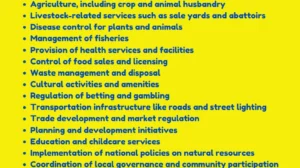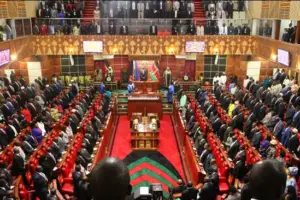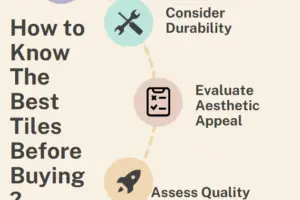How Much Money Is in the World?

Money is a system of value that facilitates the exchange of goods and services in an economy.
It can take different forms, such as:
But how much money is there in the world? And how is it distributed among different countries, regions, and people?
In this article, we will try to answer these questions using the latest available data and estimates.
How Much Money Is There in the World Per Person?
One way to measure the amount of money in the world is to look at the gross domestic product (GDP) of each country.
GDP is the total value of all the goods and services produced in a country in a given year.
According to the World Bank, the global GDP was $96.1 trillion in 2020.
If we divide this by the world population of 7.8 billion, we get an average income of about $12,321 per person.
However, this does not mean that everyone has the same amount of money.
There are considerable differences in income levels across countries and regions.
For example, the GDP per capita of Luxembourg was $115,832 in 2020, while that of Burundi was only $261.
Moreover, GDP does not capture all the forms of money that people may have, such as savings, investments, or assets.
Another way to measure the amount of money in the world is to look at the money supply of each country.
Money Supply
Money supply is the total amount of money available in an economy at a point in time.
It can be classified into different categories depending on how liquid it is, meaning how easily it can be converted into cash.
The most common categories are:
- M0: The total amount of physical currency in circulation, such as coins and banknotes.
- M1: M0 plus the amount of money held in checking accounts and other demand deposits.
- M2: M1 plus the amount of money held in savings accounts, money market funds, and other time deposits.
- M3: M2 plus the amount of money held in large certificates of deposit, institutional money market funds, and other less liquid assets.
According to estimates from The Balance, the global M0 was $6.6 trillion, the global M1 was $37.2 trillion, the global M2 was $95.7 trillion, and the global M3 was $127 trillion in 2020.
If we divide these by the world population of 7.8 billion, we get an average amount of money per person of:
- $846 for M0
- $4,769 for M1
- $12,269 for M2
- $16,282 for M3
Again, these averages do not reflect the actual distribution of money among people.
Some countries have more money supply than others, and some people have more money than others within each country.
For example, according to The Balance, the U.S. had $5.4 trillion of M0, $19.6 trillion of M1, $21.3 trillion of M2, and $21.9 trillion of M3 in 2020.
The Balance US Money Supply
This means that the average amount of money per person in the U.S. was:
- $16,156 for M0
- $58,722 for M1
- $63,833 for M2
- $65,660 for M3
However, this does not mean that every American has this much money.
According to [Statista], the median household income in the U.S. was $68,703 in 2019 (the latest available data), which is much lower than the average money supply per person.
How Much Money Is in the World in USD?
Another way to measure the amount of money in the world is to convert all the currencies into one common currency, such as U.S. dollars (USD).
This allows us to compare the value of different currencies and their purchasing power across countries and regions.
However, converting currencies is not a straightforward task.
There are different exchange rates that can be used to convert one currency into another, depending on how they are determined by market forces or government policies.
One type of exchange rate is called nominal exchange rate (NER).
This is simply the price of one currency expressed in terms of another currency at a given point in time.
For example, according to Xe, on February 10th 2023,
- 1 USD = 82.98 Indian rupees (INR)
- 1 USD = 0.72 British pounds (GBP)
- 1 USD = 0.86 euros (EUR)
Using nominal exchange rates, we can convert all the currencies into USD and add them up to get an estimate of how much money is in the world in USD.
According to The Balance, there were about 180 currencies recognized as legal tender by various countries and territories around the world in 2020.
The total value of these currencies in USD, using the nominal exchange rates as of December 31st 2020, was:
- $8.3 trillion for M0
- $40.4 trillion for M1
- $90.4 trillion for M2
- $118.9 trillion for M3
However, nominal exchange rates do not reflect the differences in the cost of living and the purchasing power of different currencies.
For example, 1 USD can buy more goods and services in India than in the U.S., because the prices of goods and services are generally lower in India than in the U.S.
Purchasing Power Parity (PPP) Exchange Rate
Therefore, another type of exchange rate is called the purchasing power parity (PPP) exchange rate.
This is a hypothetical exchange rate that equalizes the purchasing power of different currencies in terms of a common basket of goods and services.
For example, according to [The World Bank], the PPP exchange rate between USD and INR was 20.65 in 2019 (the latest available data), which means that 1 USD can buy the same amount of goods and services in India as 20.65 INR can.
Using PPP exchange rates, we can convert all the currencies into USD and add them up to get another estimate of how much money is in the world in USD.
According to [The World Bank], there were about 176 currencies with PPP exchange rates available for 2019.
The total value of these currencies in USD, using the PPP exchange rates as of December 31st 2019, was:
- $18.6 trillion for M0
- $90.2 trillion for M1
- $214.1 trillion for M2
- $281.5 trillion for M3
As we can see, using PPP exchange rates gives us much higher estimates of how much money is in the world in USD than using nominal exchange rates. This is because PPP exchange rates tend to increase the value of currencies with lower purchasing power and decrease the value of currencies with higher purchasing power relative to USD.
How Much Money Is in the World 2023?
The amount of money in the world changes over time due to various factors, such as:
- economic growth
- inflation
- monetary policy
- exchange rate fluctuation
- population changes
One way to project how much money will be in the world in 2023 is to use the GDP growth rates and money supply for each country and region.
GDP growth reflects the increase or decrease in the production and income of an economy, while money supply growth reflects the increase or decrease in the amount of money available in an economy.
According to [The World Bank], the global GDP growth rate was -3.5% in 2020, due to the negative impact of the COVID-19 pandemic on economic activity and trade.
However, it is expected to rebound to 4% in 2021 and 3.8% in 2022, as vaccines become more widely available and lockdown measures are eased.
The Balance
According to The Balance, the global money supply growth rate was 23.6% for M0, 12% for M1, 10.9% for M2, and 8.6% for M3 in 2020, due to the expansionary monetary policies adopted by central banks around the world to stimulate economic recovery and prevent deflation.
Using these growth rates, we can estimate how much money will be in the world in 2023 by multiplying the amount of money in 2020 by (1 + growth rate) raised to the power of three (the number of years from 2020 to 2023).
For example, using nominal exchange rates, we can estimate how much money will be in the world in USD in 2023 as follows:
- $11.7 trillion for M0 = $8.3 trillion x (1 + 0.236)^3
- $51 trillion for M1 = $40.4 trillion x (1 + 0.12)^3
- $114.7 trillion for M2 = $90.4 trillion x (1 + 0.109)^3
- $150.7 trillion for M3 = $118.9 trillion x (1 + 0.086)^3
Similarly, using PPP exchange rates, we can estimate how much money will be in the world in USD in 2023 as follows:
- $26.2 trillion for M0 = $18.6 trillion x (1 + 0.236)^3
- $114 trillion for M1 = $90.2 trillion x (1 + 0.12)^3
- $271 trillion for M2 = $214.1 trillion x (1 + 0.109)^3
- $356 trillion for M3 = $281.5 trillion x (1 + 0.086)^3
These estimates are based on some assumptions and limitations.
PPP exchange rate assumptions and limitations
Some of the assumptions and limitations of these estimates are:
- They assume that the growth rates of GDP and money supply will remain constant from 2020 to 2023, which may not be the case due to various factors, such as changes in economic policies, market conditions, inflation, exchange rate fluctuations, and unexpected shocks.
- They use the nominal and PPP exchange rates as of the end of 2020 and 2019, respectively, which may not reflect the current or future values of different currencies relative to USD.
- They do not account for the differences in the definitions and measurements of money supply across countries and regions, which may affect the comparability and accuracy of the data.
- They do not include the value of other forms of money that are not captured by the conventional categories of money supply, such as cryptocurrencies, gold, or other assets.
How Much Money Is in the World in Pounds?
Another common currency that can be used to measure the amount of money in the world is the British pound (GBP).
To convert all the currencies into GBP, we can use the nominal and PPP exchange rates between GBP and other currencies.
According to [Xe], on February 10th 2023,
- 1 GBP = 1.39 USD
- 1 GBP = 118.76 INR
- 1 GBP = 1.19 EUR
Using these nominal exchange rates, we can convert all the currencies into GBP and add them up to get an estimate of how much money is in the world in GBP.
According to [The Balance], there were about 180 currencies recognized as legal tender by various countries and territories around the world in 2020.
The total value of these currencies in GBP, using the nominal exchange rates as of December 31st 2020, was:
- £6 trillion for M0
- £29.1 trillion for M1
- £65.1 trillion for M2
- £85.6 trillion for M3
According to [The World Bank], there were about 176 currencies with PPP exchange rates available for 2019.
The total value of these currencies in GBP, using the PPP exchange rates as of December 31st 2019, was:
- £13.4 trillion for M0
- £64.8 trillion for M1
- £153.8 trillion for M2
- £202.7 trillion for M3
How Much Money Is in the World in Rupees?
Another common currency that can be used to measure the amount of money in the world is the Indian rupee (INR).
To convert all the currencies into INR, we can use the nominal and PPP exchange rates between INR and other currencies.
According to [Xe], on February 10th 2023,
- 1 INR = 0.012 USD
- 1 INR = 0.0084 GBP
- 1 INR = 0.01 EUR
Using these nominal exchange rates, we can convert all the currencies into INR and add them up to get an estimate of how much money is in the world in INR.
According to [The Balance], there were about 180 currencies recognized as legal tender by various countries and territories around the world in 2020.
The total value of these currencies in INR, using the nominal exchange rates as of December 31st 2020, was:
- ₹598.8 lakh crore for M0
- ₹2,737 lakh crore for M1
- ₹6,517 lakh crore for M2
- ₹8,566 lakh crore for M3
According to [The World Bank], there were about 176 currencies with PPP exchange rates available for 2019.
The total value of these currencies in INR, using the PPP exchange rates as of December 31st 2019, was:
- ₹902 lakh crore for M0
- ₹4,378 lakh crore for M1
- ₹10,394 lakh crore for M2
- ₹13,671 lakh crore for M3
How Much Money Is in the World Economy?
Another way to measure the amount of money in the world is to look at the global gross domestic product (GDP).
GDP is the total value of all the goods and services produced in a country or region in a given year.
It is a measure of economic activity and output.
According to [The World Bank], the global GDP was $96.1 trillion in 2020.
This means that the total value of all the goods and services produced in the world in that year was $96.1 trillion.
However, GDP does not capture all the forms of money that people may have or use, such as savings, investments, or assets.
It also does not reflect the distribution or inequality of income and wealth among different countries and regions.
Value of All Currency in the World
Another way to measure the amount of money in the world is to look at the value of all currencies in the world.
Currency is the physical form of money, such as coins and banknotes, that is issued by a government or a central bank and used as a medium of exchange.
According to [The Balance], the total value of all currency in the world was:
- $8.3 trillion in 2020, using nominal exchange rates.
This means that the total value of all the coins and banknotes in circulation in the world in that year was $8.3 trillion.
However, currency is only a small fraction of the total money supply in the world.
Most of the money in the world exists in digital or electronic form, such as deposits, transfers, or cards.
Currency also does not reflect the purchasing power or the exchange rate of different currencies.
How Much Money Is the World Worth?
Another way to measure the amount of money in the world is to look at how much money is the world worth.
This is a difficult question to answer, as there is no definitive or agreed-upon way to measure the value of the world.
One possible way to estimate how much money is the world worth is :
- to add up the value of all the assets and liabilities in the world
Assets are things that have value and can generate income or benefits, such as:
- land
- buildings
- machines
- stocks
- bond
- gold.
Liabilities are things that have negative value and require payments or obligations, such as debts, loans, or taxes.
According to [Credit Suisse], the total value of global wealth, which includes both financial and non-financial assets minus liabilities, was $418.3 trillion in 2020.
This means that the net worth of all the people in the world in that year was $418.3 trillion.
However, this estimate does not include the value of natural resources, such as:
- water
- air
- biodiversity, which is essential for human survival and well-being.
It also does not include the value of human capital, such as:
- skills
- knowledge
- creativity, which is important for economic development and innovation.
Moreover, it does not account for the distribution or inequality of wealth among different countries and regions.
What Are the 4 Types of Money?
Money can be classified into different types depending on its functions and characteristics.
The four main types of money are:
- Commodity money: This is money that has intrinsic value and can be used as a medium of exchange or a store of value. Examples of commodity money are gold, silver, or salt.
- Fiat money: This is money that has no intrinsic value but is declared as legal tender by a government or a central bank. It can be used as a medium of exchange or a unit of account. Examples of fiat money are coins and banknotes.
- Bank money: This is money that is created by commercial banks through lending and depositing activities. It can be used as a medium of exchange or a unit of account. Examples of bank money are checking accounts, savings accounts, or credit cards.
- Cryptocurrency: This is money that is created and transferred using cryptography and distributed ledger technology. It can be used as a medium of exchange or a store of value. Examples of cryptocurrencies are Bitcoin, Ethereum, or Dogecoin.
Conclusion
Money is a complex and dynamic concept that can be measured and analyzed in different ways.
There is no single answer to how much money is in the world, as it depends on how we define and calculate it.
Some possible ways to measure how much money is in the world are:
- Using GDP and dividing it by population to get an average income per person
- Using money supply and dividing it by population to get an average amount of money per person
- Converting all currencies into one common currency using nominal or PPP exchange rates
- Projecting how much money will be in the future using growth rates
- Adding up the value of all currency in circulation
- Adding up the value of all assets and liabilities
- Classifying money into different types based on its functions and characteristics
These methods have their own advantages and disadvantages, and they may give different results depending on the data sources and assumptions used.
Therefore, it is important to understand how these methods work and what they imply before using them to compare or evaluate different aspects of money in the world.
If you found this article impressive follow for more on our blog page as sampled below:


















































